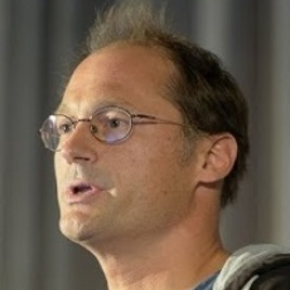ERC funding to understand how scientific mistakes spread
The scientific community has organised itself to detect and correct its own published errors. However, safety nets do not always work and in this context the NanoBubbles project is looking at the case of heated debates in the field of nanobiology. The team is made up of French and Dutch researchers and has been awarded over eight million euros of European funding to check the reproducibility of certain work and develop algorithms capable of automatically dissecting and analysing scientific articles.
The field of nanobiology has been booming since 2000. Its researchers study possible applications for nanoparticles and the impact these could have on the living world. This discipline produces important results that are known to sometimes lead to methodological controversy. The NanoBubbles project is investigating why, when and how science fails to correct its own errors. This international team has just been awarded an ERC Synergy grant of €8.3 million over a period of six years.
This questioning process stems from work by Raphaël Levy, professor at the University of Sorbonne Paris Nord and the coordinator of NanoBubbles, who showed that a family of nanoparticles known as 'stripy' does not in fact exist. These structures were described in articles published in the most prestigeous scientific journals but in fact they were artefacts of certain microscopes. For this project, Professor Levy worked in collaboration with a team of computer scientists, sociologists and historians.
"I joined NanoBubbles as a specialist in error detection and propagation in scientific literature," explains Cyril Labbé, a lecturer at the Université Grenoble Alpes and a member of the Grenoble Computer Science Laboratory (LIG - CNRS/Inria/Grenoble INP/Université Grenoble Alpes). "I use natural language analysis methods to dissect articles and understand their content better. To take this question further, we need to study and understand the route of assertions and counter-affirmations through the literature, for example by analysing contexts linked to citations or social networks."
NanoBubbles' questioning is centred on three controversial points. Firstly, whether or not nanoparticles in the blood can cross the blood-brain barrier to enter the brain. Secondly, whether these particles can cross the cell membrane. Finally, the project's researchers will examine the adoption of the term "protein corona" which has been presented as new to describe an existing known phenomenon which could lead to an oversight and/or the rediscovery of pre-existing knowledge.
To study these three points, Raphaël Levy will check for example the reproducibility of certain works while Cyril Labbé develops automatic text analysis tools to understand which assertions a scientific article is based on. This will help him quickly identify articles that are based on a disputed or even mistaken premise. However, this cannot be achieved simply by studying the bibliography of an article because a researcher may just quote an article to contradict it. Cyril Labbé also uses machine learning techniques which will enable a corpus to be constructed of articles dedicated to learning.
Cyrus Mody, a science historian and sociologist from Maastricht University (Netherlands), and Willem Halffman, a science policy specialist from Radboud University in Nijmegen (Netherlands) complete the core team of the NanoBubbles project. These two researchers study the non-scientific factors that can sometimes hinder the smooth running of research. The findings from NanoBubbles are expected to help nanobiology progress but this discipline is also viewed as a case study for the application of more general methods. The project will thus provide tools to help other scientific fields deal more effectively with their own controversies.
This highly interdisciplinary project also involves the sociologist Marianne Noël from the LISIS1 , the librarian and linguist Frédérique Bordignon, the British philosopher Yasemin J. Erden and the computer scientists Guillaume Cabanac from the IRIT2 and François Portet from the LIG.
Contact
Notes
- Interdisciplinary Laboratory for Sciences, Innovations and Societies (LISIS - CNRS/Université Gustave Eiffel/INRAE)
- Institut de Recherche en Informatique de Toulouse (Toulouse Research Institute in Computer Science, IRIT - CNRS/ Toulouse 1 Capitole University/Université Toulouse 2 Jean Jaurès/Université Toulouse 3 Paul Sabatier/INP Toulouse)
